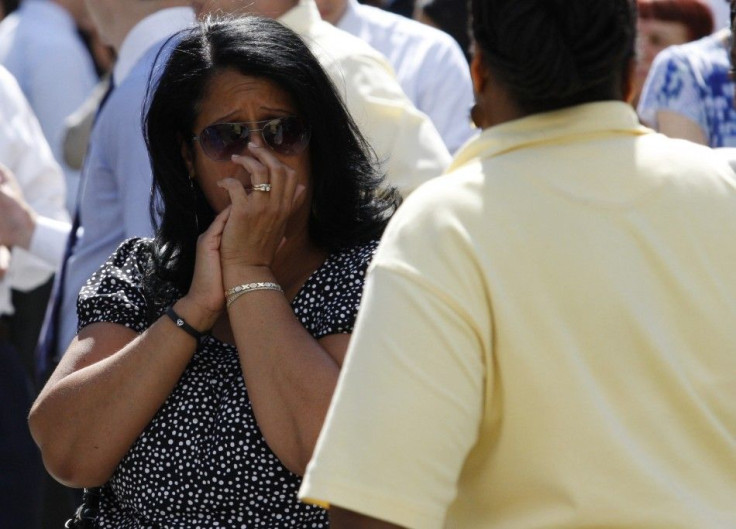Multiple Earthquakes in Past 24 Hours Inspire Doomsday Mode

A second earthquake hit California on Wednesday and another shook Peru, further rattling Americans who are feeling anxious about a doomsday scenario after this week's unusual seismic activity on the East Coast.
The East Bay area of northern California experienced two 3.6-magnitude earthquakes in half a day's time: The first hit Tuesday night at about 11:30 p.m. and the second was just after 10 a.m. Wednesday.
Also on Wednesday, a strong earthquake struck a remote Amazon region of Peru. It was originally reported as having a 6.8- magnitude but the United States Geological Survey (USGS) has upgraded it to a magnitude-7.0.
Early Tuesday morning, Colorado was rocked by a 5.7-magnitude earthquake -- the strongest to hit the state since 1973.
And on Tuesday afternoon, the 5.9-magnitude earthquake with its epicenter in Mineral, Va., was felt in Washington D.C., New York City, and as far north as Toronto.
Earthquakes -- even in the U.S. -- are far more common than most people are aware, but the back-to-back quakes and involvement of the East Coast have some Americans nervous.
The Los Angeles Times reported Wednesday that the U.S. has experienced 728 earthquakes in various parts of the country this week, which is not unusual -- but an earthquake on the East Coast is.
Some West Coast-based headlines Tuesday gently mocked the panicked reaction of East Coast residents who are unaccustomed to seismic activity. A Los Angeles Times article titled What?! An earthquake? East Coast reacts with shock highlighted the opposing coastal sensibilities when it comes to earthquakes:
...an earthquake is the kind of thing that's supposed to happen in Los Angeles. But not New York City. Or Boston. Or Washington, D.C. Or North Carolina ...Yet, up and down the East Coast on Tuesday people reacted with outright shock and disbelief as the news was confirmed by the U.S. Geological Service.
For some New Yorkers, particularly those working in tall buildings, Tuesday's earthquake triggered recall of the 9/11 terror attacks.
My desk started to shake, so then everybody on the floor decided to evacuate. We didn't know what it was, but we said let's not take any chances and just leave the building, one Manhattan worker told NY1.
Adrian Ollivierre, a 28-year-old accountant with an office on the 60th floor of the Empire State Building, raced down the stairs and out into the street after the quake rattled his office. I thought I was having maybe a heart attack, and I saw everybody running, he told The Associated Press. I think what it is, is the paranoia that happens from 9/11, and that's why I'm still out here -- because, I'm sorry, I'm not playing with my life.
Some fear the series of mini-disasters has apocalyptic implications. I sure hope this whole earthquake-thing hitting Massachusetts, Colorado, and every other place doesn't turn into 'The Day After Tomorrow, the Washington Post reported someone posting on Twitter.
By Wednesday afternoon, more earthquake/doomsday tweets were beginning to appear:
Twitter user @edgylesjr wrote: CO, VA, CA... now Peru? Seriously, isn't there a superhero out there able to stop that villain from using his doomsday earthquake machine?
And @envymybieber said: hurricane, earthquake and now tornadoes i'm hearing about. i'm starting to think these mayans had doomsday off by a year [sic]
While the earthquakes themselves cannot reasonably be interpreted as a sign of the coming apocalypse, there is a potential for a nightmare scenario if an earthquake were to disrupt the operation of nuclear power plant.
This past May, the federal government ran a simulation exercise -- National Level Exercise 11 -- which measured the effects of a devastating earthquake in the Midwest similar to the 1811 quake that rocked the then-sparsely populated area near the New Madrid fault line.
National Level Exercise 11, or NLE 11, was, in essence, a replay of a disaster that happened 200 years earlier, Noah Schactman wrote in Wired magazine. On Dec. 16, 1811, a magnitude 7.7 earthquake hit the New Madrid fault line, which lies on the border region of Illinois, Indiana, Missouri, Arkansas, Kentucky, Tennessee and Mississippi.
The simulated scenario killed 100,000 Midwesterners, left another 7 million homeless, and significantly damaged the 15 nuclear power plants in the area.
Electric power would go out, not for days, but for weeks and months in the four state region, Paul Stockton, the Defense Department's senior homeland security official, told Wired. Municipal water systems, they all run on electricity, don't they? Well, people are gonna get thirsty. You need water for firefighting, don't you? Second, all gasoline pumps run on electric power. Same with diesel fuel. So in terms of road mobility, of getting the relief forces in, and evacuating people out - no gasoline? The cascading failures go on and on.
Many are unaware of how close Tuesday's earthquake in Virginia came to reaching potentially nightmare proportions. The earthquake's epicenter was only a few miles from the North Anna nuclear power plant operated by Dominion Resources in Mineral, Va., and the earthquake's 5.8-magnitude was dangerously close to the maximum magnitude the plant is built to sustain.
Dominion spokesman Jim Norvelle told Reuters the plant was designed to withstand an earthquake of up to 6.2 in magnitude. And while the power plant is prepared with back-up power, generators are not always reliable.
Nuclear power plants lose a significant margin of safety when they're forced to rely on these emergency back-up systems, Paul Gunter, director of reactor oversight at Beyond Nuclear, an anti-nuclear lobby group, told Reuters.
The same article pointed out that failure of generators was a key reason for the disaster at Japan's Fukushima Daiichi plant after a 9.0 magnitude quake and tsunami in March.
© Copyright IBTimes 2025. All rights reserved.






















